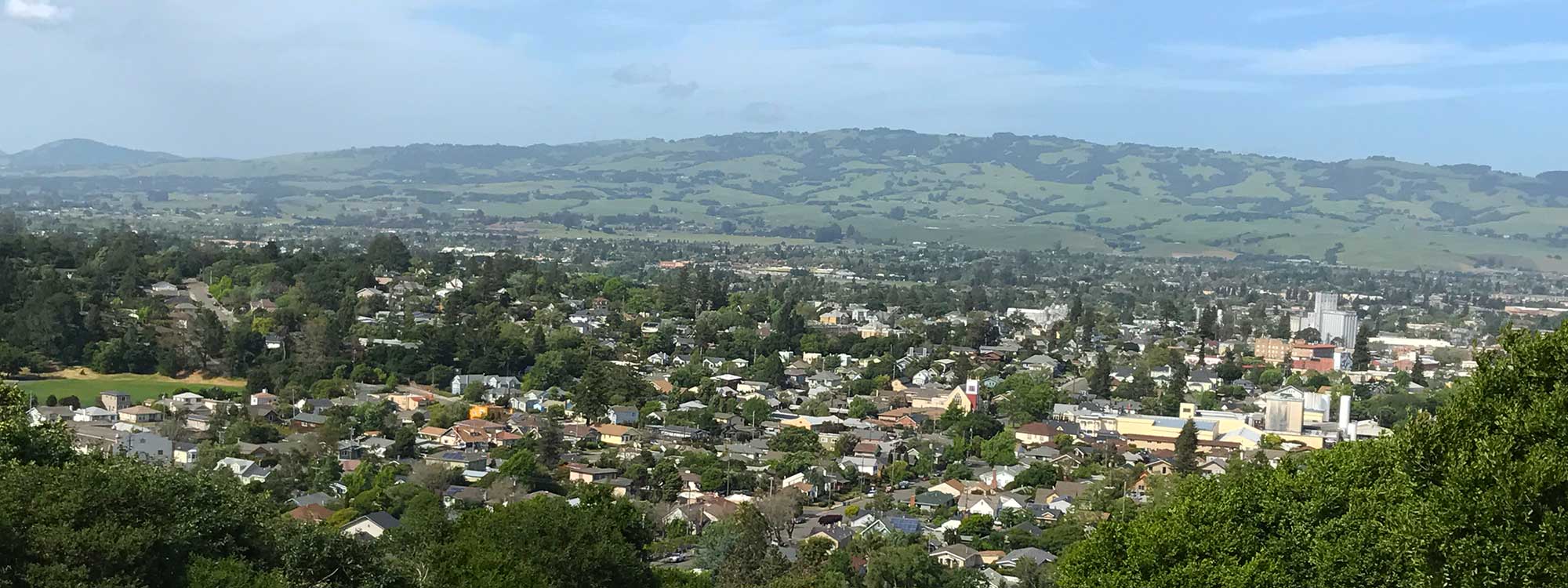When it comes to housing and climate change, Sonoma County certainly has enough challenges to tackle. Its residents are increasingly facing burdensome housing costs, limited housing availability, and dangerous risks from wildfire threatening their homes. The fires in recent years have fueled the housing crisis, burning down thousands of homes and displacing residents. We must come to terms with the fact that longer, more intense wildfire seasons are the new normal and in order to adapt to this reality, we need to ensure we are housing people in safe areas that are protected during these catastrophic events.
Housing—affordable, safe, and accessible—is one of the most effective ways to tackle climate change and its accompanying worsening fires. Already, low-income and non-white communities face the brunt of these challenges. This can be seen in towns like Healdsburg, where people who work in agriculture, service, and tourism industries along with other laborious sectors, experience serious housing and climate threats. Such challenges include living in the surrounding unincorporated areas of the county where infrastructure services like drinking water and wastewater may be lacking. There is also more interim housing insecurity and overcrowding here along with more people who work outside during poor air quality due to wildfires. These examples are just a few that capture how the housing needs are not lateral or equal across populations in Sonoma County and they are certainly not unique to Healdsburg. In fact, Petaluma, Cloverdale, and the City of Sonoma share similar housing inequities.
If we act proactively, we can prevent some of the impacts we are already seeing from climate change from hitting overburdened communities. For example, Sonoma County and the cities within it are currently updating their required housing elements, which will decide where and what type of housing can be built. These housing elements can help to ensure multi-unit homes are built in existing urban areas, and away from high-fire risk areas—an extremely effective way to keep people safe. It does not make sense anymore to keep building homes further away from existing communities, near wildlands and spaces that pose higher fire risk. Instead, we should invest and plan for housing in existing cities and towns that is (a) concentrated near services (i.e., jobs, schools, hospitals, transit, etc.), (b) increasingly affordable and accessible to all, and (c) away from fire-prone areas.
Other effective housing strategies we can pursue in order to mitigate future climate change risks while also withstanding the impacts we are already grappling with, include:
- Addressing racist and discriminatory housing practices.
- Removing restrictive zoning that prevents new housing from being built (i.e., single family zoning).
- Concentrating housing in existing communities with access to services and multi-modal transportation options.
- Preventing sprawl housing development in the wildland-urban interface (WUI) that increases our dependence on cars and puts homes at risk of fire.
- Building affordable housing in high opportunity areas and working with communities that have been under-invested in to address their housing needs.
- Building different types of housing that will meet the needs and allow choice for different families and residents.
Now, Sonoma County residents have an opportunity to influence the housing element as the County released its Draft Housing Strategy and will be releasing its draft housing element within the coming months. Other Sonoma County cities, Sonoma, Rohnert Park, and Sebastabol have released their drafts and are available for public comment now while others like Cloverdale and Healdsburg are preparing to release their draft to the public in the near future. It’s imperative that community members be included in the housing element process by speaking up about these drafts and weighing in on the other strategies listed above to advance equity in housing and climate resilience in the county and beyond.
Feel free to contact Resilience Manager Blanca Escobedo to get more information about specific opportunities to engage in Sonoma County.





